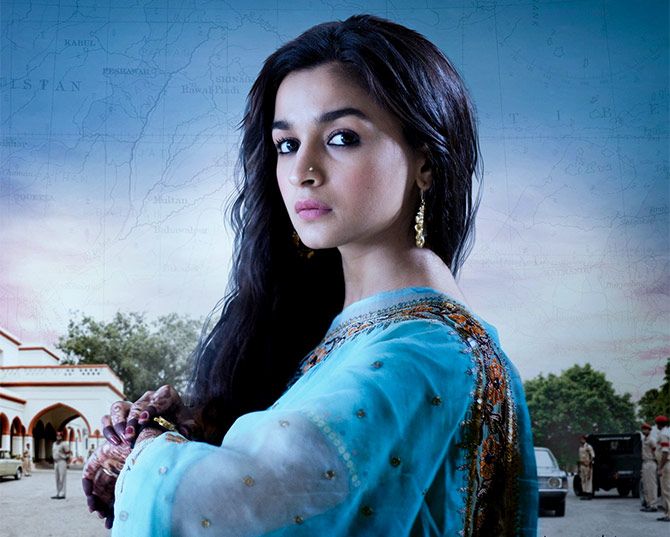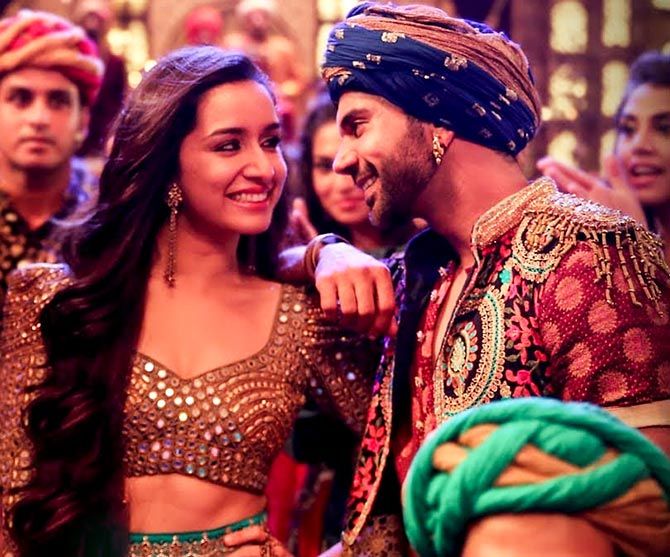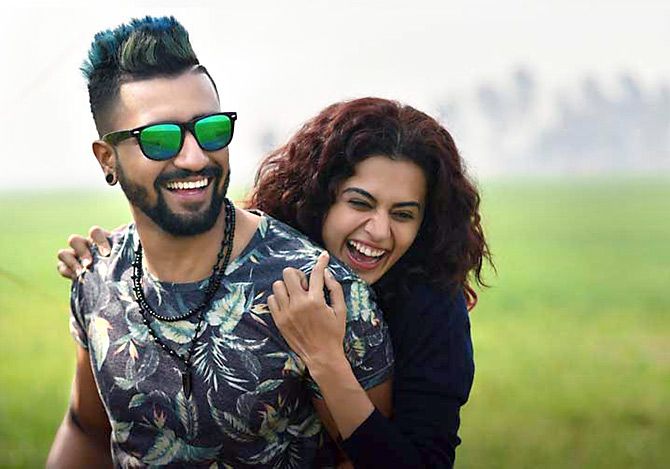After a miserable two years of flopping films and stagnant revenues, what has changed for the film industry?
Vanita Kohli-Khandekar finds out.

Sanju, Padmaavat, Raazi, Sonu Ke Titu Ki Sweety, Bharat Ane Nenu, Rangasthalam.
The list of profitable films in 2018 is getting longer.
"It has been a great year so far," says Nitin Tej Ahuja, publisher of the trade magazine Box Office India..
After a miserable two years of flopping films and stagnant revenues, what has changed for the Rs 156 billion film industry?
Meghna Gulzar's Raazi, one of the most profitable films of the year, has Alia Bhatt in the lead.
She is not a star the trade would have bet on for a film that rests largely on her shoulders. However, the (real) story of an Indian girl who married a Pakistani army officer to spy on him during the 1971 war is an outstanding film.
Audiences loved it and spent close to Rs 2 billion (in India and overseas) buying tickets to watch it.
That is true for many of the top 50 films.
What's changed is the frequency with which such films, called 'content films', are doing well.
In industry parlance, 'content films' are those without a star while 'commercial' or 'masala' films have big names.

"In the last few years, audience's tastes are changing and that change is now entering into the top 10 charts. Raazi, Sonu... it is not just about big actors not being there, it is about content. Earlier people used to watch big stars even if content was ok, now there is a drop in that," says Kumar Ahuja, president, business development, Eros International Media.
"In general, content films or more meaningful films are the norm rather than the exception," adds Ajit Andhare, CEO, Viacom18 Motion Pictures.
Not only are such films these being made but these are pulling in revenues.
"In the last six months, a lot of films have done a business of Rs 1 billion, Raazi, Raid, Veere Di Wedding," points out Bhushan Kumar, chairman and managing director, Super Cassettes Industries (T-Series).
"Compared to previous years, the first six months of 2018 have been a high earning one," says a happy Apoorva Mehta, chief executive officer, Dharma Productions, which co-produced Raazi with Junglee Pictures.
What can an unpredictable industry learn from this revival? To start with, it could note the two key points about it.
One, unlike earlier turnarounds this one seems to be coming from increased ticket sales and not just higher ticket prices.
About two-thirds of the Indian film industry's Rs 156 billion in revenues comes from the sale of tickets.
Roughly 1.3 billion tickets were sold in 2017, a figure that has been falling/stagnant for about four years. That is what data from Ormax Media shows for four key genres -- Hindi, English, Tamil and Telugu.
This year "people have started going to the theatres," says Kumar.
For example, ticket sales at PVR Cinemas, the largest multiplex chain in India, went from about 21 million in the first quarter of 2017-2018 to 22.7 million in the same period in 2018-2019.
At Inox Leisure, it remained stagnant while trends from other chains are not available.

Shailesh Kapoor, CEO of Ormax Media, cautions that better numbers indicate the same people are watching more films.
Kamal Gianchandani, CEO, PVR Pictures, reckons unique users are increasing in under-penetrated markets -- say a Vellore where new multiplexes or screens are coming up and audiences are walking back into theatres after years.
In older multiplexes, the same people are watching more films.
Ticket sales is a tough area to monitor, but overall film viewing on every other media has increased.
On TV it rose from 21 per cent (in 2015) to about 24 per cent (2018) of all TV watched, according to BARC data.
Then there is the rise in streaming services, many of which are driven by movies.

And that brings us to the second point about this revival -- OTT (over-the-top) has been a catalyst for some of this change.
More than 35 streaming services have exposed Indians, 412 million of them on broadband, to a rich diversity of content.
As a result, "film-makers have cleaned up their act," says Nitin Tej Ahuja.
"The whole theory has been that OTT will kill theatres. But the year in which OTTs have shown maximum growth is also the year in which theatres are doing well," says Gianchandani.
Kapoor, however, remains circumspect. "It has been good, but too much is being read... Usually the second half beings in 60 to 70 per cent of the collections for Hindi films because all the big releases come during the festival season," says he.
But the second half of 2018 looks good too.
There is Stree, Manmarziyaan, Sui Dhaaga and Badhaai Ho.
And of course some of the biggest releases of the year -- Thugs of Hindostan, Zero, 2.0 -- are yet to come.
It looks like a really happy new year for India's film business.












